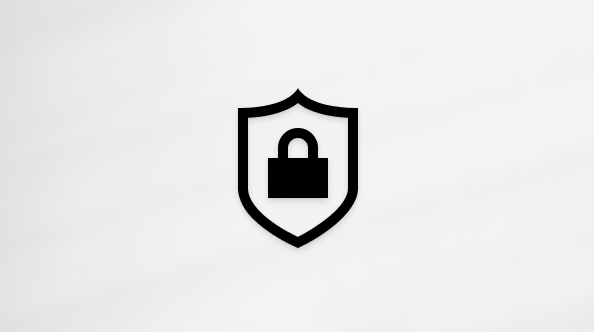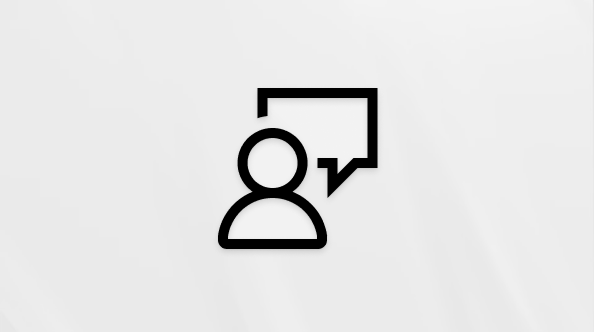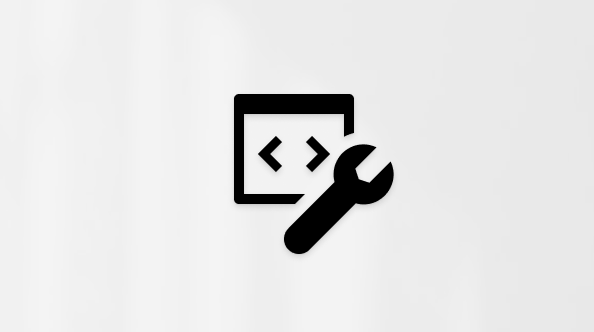Applies to
|
Form Object |
|
Report Object |
You can use the PrtDevMode property to set or return printing device mode information specified for a form or report in the Print dialog box. Read/write Variant.
expression.PrtDevMode
expression Required. An expression that returns one of the objects in the Applies To list.
Remarks
It is strongly recommended that you consult the Win32 Software Development Kit for complete documentation on the PrtDevMode, PrtDevNames, and PrtMip properties.
The PrtDevMode property setting is a 94-byte structure that mirrors the DEVMODE structure defined in the Win32 Software Development Kit. For complete information on the PrtDevMode property members, consult the Win32 Software Development Kit.
The PrtDevMode property uses the following members.
|
Member |
Description |
|
DeviceName |
A string with a maximum of 32 bytes that specifies the name of the device the driver supports — for example, "HP LaserJet IIISi" if the Hewlett-Packard LaserJet IIISi is the specified printer. Each printer driver has a unique string. |
|
SpecVersion |
An Integer that specifies the version number of the DEVMODE structure in the Win32 Software Development Kit. |
|
DriverVersion |
An Integer that specifies the printer driver version number assigned by the printer driver developer. |
|
Size |
An Integer that specifies the size, in bytes, of the DEVMODE structure. (This value doesn't include the optional dmDriverData member for device-specific data, which can follow this structure.) If an application manipulates only the driver-independent portion of the data, you can use this member to find out the length of this structure without having to account for different versions. |
|
DriverExtra |
An Integer that specifies the size, in bytes, of the optional dmDriverData member for device-specific data, which can follow this structure. If an application doesn't use device-specific information, you set this member to 0. |
|
Fields |
A Long value that specifies which of the remaining members in the DEVMODE structure have been initialized. |
|
Orientation |
An Integer that specifies the orientation of the paper. It can be either 1 (portrait) or 2 (landscape). |
|
PaperSize |
An Integer that specifies the size of the paper to print on. If you set this member to 0 or 256, the length and width of the paper are specified by the PaperLength and PaperWidth members, respectively. Otherwise, you can set the PaperSize member to a predefined value. |
|
PaperLength |
An Integer that specifies the paper length in units of 1/10 of a millimeter. This member overrides the paper length specified by the PaperSize member for custom paper sizes or for devices such as dot-matrix printers that can print on a variety of paper sizes. |
|
PaperWidth |
An Integer that specifies the paper width in units of 1/10 of a millimeter. This member overrides the paper width specified by the PaperSize member. |
|
Scale |
An Integer that specifies the factor by which the printed output will be scaled. The apparent page size is scaled from the physical page size by a factor of scale/100. For example, a piece of paper measuring 8.5 by 11 inches (letter-size) with a Scale value of 50 would contain as much data as a page measuring 17 by 22 inches because the output text and graphics would be half their original height and width. |
|
Copies |
An Integer that specifies the number of copies printed if the printing device supports multiple-page copies. |
|
DefaultSource |
An Integer that specifies the default bin from which the paper is fed. |
|
PrintQuality |
An Integer that specifies the printer resolution. The values are –4 (high), –3 (medium), –2 (low), and –1 (draft). |
|
Color |
An Integer. For a color printer, specifies whether the output is printed in color. The values are 1 (color) and 2 (monochrome). |
|
Duplex |
An Integer. For a printer capable of duplex printing, specifies whether the output is printed on both sides of the paper. The values are 1 (simplex), 2 (horizontal), and 3 (vertical). |
|
YResolution |
An Integer that specifies the y-resolution of the printer in dots per inch (dpi). If the printer initializes this member, the PrintQuality member specifies the x-resolution of the printer in dpi. |
|
TTOption |
An Integer that specifies how TrueType fonts will be printed. |
|
Collate |
An Integer that specifies whether collation should be used when printing multiple copies. Using uncollated copies provides faster, more efficient output, since the data is sent to the printer just once. |
|
FormName |
A string with a maximum of 16 characters that specifies the size of paper to use; for example, "Letter" or "Legal". |
|
Pad |
A Long value that is used to pad out spaces, characters, or values for future versions. |
|
Bits |
A Long value that specifies in bits per pixel the color resolution of the display device. |
|
PW |
A Long value that specifies the width, in pixels, of the visible device surface (screen or printer). |
|
PH |
A Long value that specifies the height, in pixels, of the visible device surface (screen or printer). |
|
DFI |
A Long value that specifies the device's display mode. |
|
DFR |
A Long value that specifies the frequency, in hertz (cycles per second), of the display device in a particular mode. |
Note: You can set the PrtDevMode property using Visual Basic for Applications (VBA) code.
This property setting is read/write in Design view or Layout view, and read-only in other views.
Printer drivers can add device-specific data immediately following the 94 bytes of the DEVMODE structure. For this reason, it is important that the DEVMODE data outlined above not exceed 94 bytes.
Only printer drivers that export the ExtDeviceMode function use the DEVMODE structure.
An application can retrieve the paper sizes and names supported by a printer by using the DC_PAPERS, DC_PAPERSIZE, and DC_PAPERNAMES values to call the DeviceCapabilities function.
Before setting the value of the TTOption member, applications should find out how a printer driver can use TrueType fonts by using the DC_TRUETYPE value to call the DeviceCapabilities function.
Example
The following example uses the PrtDevMode property to check the user-defined page size for a report:
Private Type str_DEVMODE
RGB As String * 94
End Type
Private Type type_DEVMODE
strDeviceName As String * 32
intSpecVersion As Integer
intDriverVersion As Integer
intSize As Integer
intDriverExtra As Integer
lngFields As Long
intOrientation As Integer
intPaperSize As Integer
intPaperLength As Integer
intPaperWidth As Integer
intScale As Integer
intCopies As Integer
intDefaultSource As Integer
intPrintQuality As Integer
intColor As Integer
intDuplex As Integer
intResolution As Integer
intTTOption As Integer
intCollate As Integer
strFormName As String * 32
lngPad As Long
lngBits As Long
lngPW As Long
lngPH As Long
lngDFI As Long
lngDFr As Long
End Type
Public Sub CheckCustomPage(ByVal rptName As String)
Dim DevString As str_DEVMODE
Dim DM As type_DEVMODE
Dim strDevModeExtra As String
Dim rpt As Report
Dim intResponse As Integer
' Opens report in Design view.
DoCmd.OpenReport rptName, acDesign
Set rpt = Reports(rptName)
If Not IsNull(rpt.PrtDevMode) Then
strDevModeExtra = rpt.PrtDevMode
' Gets current DEVMODE structure.
DevString.RGB = strDevModeExtra
LSet DM = DevString
If DM.intPaperSize = 256 Then
' Display user-defined size.
intResponse = MsgBox("The current custom page size is " & _
DM.intPaperWidth / 254 & " inches wide by " & _
DM.intPaperLength / 254 & " inches long. Do you want " & _
"to change the settings?", vbYesNo + vbQuestion)
Else
' Currently not user-defined.
intResponse = MsgBox("The report does not have a custom page size. " & _
"Do you want to define one?", vbYesNo + vbQuestion)
End If
If intResponse = vbYes Then
' User wants to change settings. Initialize fields.
DM.lngFields = DM.lngFields Or DM.intPaperSize Or _
DM.intPaperLength Or DM.intPaperWidth
' Set custom page.
DM.intPaperSize = 256
' Prompt for length and width.
DM.intPaperLength = InputBox("Please enter page length in inches.") * 254
DM.intPaperWidth = InputBox("Please enter page width in inches.") * 254
' Update property.
LSet DevString = DM
Mid(strDevModeExtra, 1, 94) = DevString.RGB
rpt.PrtDevMode = strDevModeExtra
End If
End If
Set rpt = Nothing
End Sub
The following example shows how to change the orientation of the report. This example will switch the orientation from portrait to landscape or landscape to portrait depending on the report's current orientation.
Public Sub SwitchOrient(ByVal strName As String)
Const DM_PORTRAIT = 1
Const DM_LANDSCAPE = 2
Dim DevString As str_DEVMODE
Dim DM As type_DEVMODE
Dim strDevModeExtra As String
Dim rpt As Report
' Opens report in Design view.
DoCmd.OpenReport strName, acDesign
Set rpt = Reports(strName)
If Not IsNull(rpt.PrtDevMode) Then
strDevModeExtra = rpt.PrtDevMode
DevString.RGB = strDevModeExtra
LSet DM = DevString
DM.lngFields = DM.lngFields Or DM.intOrientation
' Initialize fields.
If DM.intOrientation = DM_PORTRAIT Then
DM.intOrientation = DM_LANDSCAPE
Else
DM.intOrientation = DM_PORTRAIT
End If
' Update property.
LSet DevString = DM
Mid(strDevModeExtra, 1, 94) = DevString.RGB
rpt.PrtDevMode = strDevModeExtra
End If
Set rpt = Nothing
End Sub










